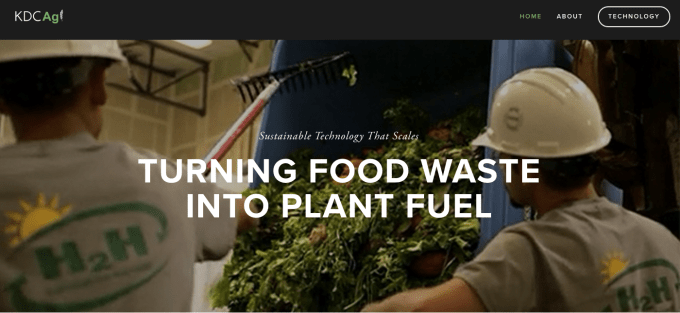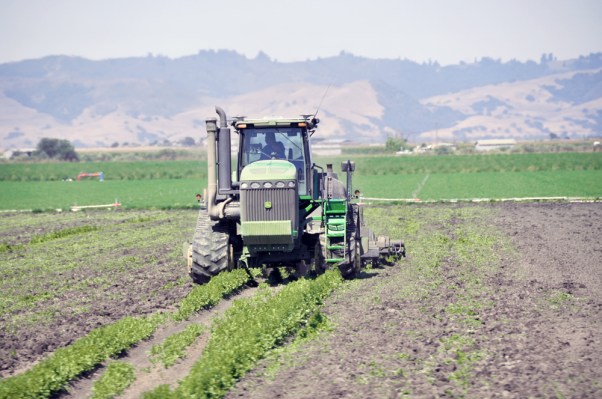Driving along the manicured streets of monied Los Angeles neighborhoods, it’s a challenge to think of California as rain-starved and sun-choked.
But a trip along Interstate 5 reveals a different world. Miles of browning grass stretch along the roadside, broken by the green clusters of California’s farms, which provide fruits, vegetables and nuts to most American households.
California is the top farm producer in the U.S. In 2015, the state’s farms and ranches harvested approximately $47 billion for their output, vastly outstripping the yields of Texas and Iowa, the second- and third-largest producers.
Yet yields are declining, and farmers in the state face a host of pressures stemming from the persistent drought that has ravaged California’s countryside.
This drought has pushed the agricultural industry to take steps that only exacerbate the problems that the lack of rainfall has caused.
To address the depleted water supply, California’s farmers have pumped water from strained groundwater pools, and at the same time are using more fertilizer (whose production and use contribute to the increasing greenhouse gasses that affect the climate, encouraging the ongoing drought conditions in the state).
“Climate conditions have exposed our house of cards,” Jay Famiglietti, a NASA scientist who studies water supplies told The New York Times in April. “The withdrawals far outstrip the replenishment. We can’t keep doing this.”
At the same time, farmers are faced with a problem that they should never be forced to anticipate. The massive amount of food waste that crops, fruits, vegetables and meat are subject to.
Enter KDC Ag, a new operating company that purports to have a solution for both the water crisis affecting farms across the country and our nation’s food waste dilemma.
The result of years of research and millions of dollars in investment, KDC Ag is commercializing a technology that claims to solve the three intertwined problems of fertilizer overuse, food waste and water scarcity in farming.
If it works, the company has a multi-million-dollar business on its hands.
From energy to food
It wouldn’t be the first time for the Kamine family, the founders of KDC Ag. The family has already made its millions in the energy business in the early 1990s. At that time, renewable energy was more of a pipe dream than a reality. But the company’s founder (and Kamine patriarch) took the problem literally and created a power business that became one of the largest in the Northeast.
“My grandfather was a plumber,” says Justin Kamine, who launched the KDC Ag subsidiary for the family. “My father grew up in the boiler rooms and wastewater systems. He started his own business after college and created a business doing wastewater heat recovery. He mortgaged his house four times, but eventually got GE interested in the efforts.”
The result was a business that became one of the largest independent power producers on the East Coast. When Hal Kamine sold the business in the early 1990s, his backers returned with a proposition to invest in telecommunications networks. That led to the development of telecom infrastructure in cities across the U.S. and another multi-million-dollar business.
Now his sons are getting into the act. Justin Kamine saw the problems that were facing the environment when he graduated from Lafayette College in 2011 and decided that the family’s connections, and skill sets, presented another opportunity for a business venture. So the Kamines went into solar development just as laws in New Jersey were becoming more favorable.
Backed by GE Energy Services and other investors, the company extended its influence and grew from power generation in the 1990s into telecommunications and subsequently solar energy, establishing a sustainability-focused conglomerate whose assets number in the billions.
That wealth allowed the family to expand into other areas, including the financing of California Safe Soil, the developer of the technology that KDC Ag hopes to commercialize.

Improving crop yields and reducing water consumption
With California Safe Soil, KDC Ag is bringing to market a new fertilizer that is both organic and water-rich, and its commercialization solves three problems that contribute to climate change. It sustainably gets rid of food waste without landfilling (a major contributor to greenhouse gasses), it allows farmers to fertilize their soil organically (without using harsh chemicals whose manufacture contribute to greenhouse gasses) and it enables farmers to use less water, which helps alleviate drought conditions in California (and everywhere else).
This miracle fertilizer is the work of years of research initiated by California Safe Soil’s founder, Dan Morash, a former energy executive who got to know the Kamine family through their first business selling waste heat and power.
Morash came to the Kamines with an idea for literal energy harvesting based on work he’d done with the conversion of agricultural waste into power.
“[Morash] saw the food waste to energy facilities and realized that food has a lot of water in it… So if you burn it, you don’t create the most efficient source of energy,” said Justin Kamine, the youngest scion of the Kamine fortune and the driving force behind KDC Ag.
Throughout the first years of the new millennium, government and energy executives were (and still are) grappling with sustainable solutions to the need for combustible fuels in the U.S. One solution they’d hit on was converting agricultural waste into fuels or energy by converting the waste into liquids or burning it for power.
Morash thought the liquid conversion was inefficient as a feedstock for fuel, and burning the waste got rid of precious water resources that could be better used not as power, but as a feedstock for crops. Thus, California Safe Soil was born.
After five years of research, the product is ready to be brought to a broader market. Kamine said KDC Ag has already contracted with grocery stores across California to pick up their food waste, bring it to California Safe Soil processing facilities and distribute the resulting fertilizer to farmers.
California Safe Soil’s Company Overview from Mark Bauer on Vimeo.
Each of the KDC Ag facilities can process 30,000 tons of fresh food waste, creating 6 million gallons of liquid fertilizer. The facilities cost $20 million to develop and the company is in the process of raising money to build additional plants across the country to bring the technology nationwide.
Kamine is trusting that the family’s experience developing networks for telecommunications and energy infrastructure can be translated to the logistics of developing and delivering fertilizer. So far, the investments are paying off.
The company has already contracted with over 200 Safe Mart stores and is looking to expand into other chains nationwide now that the holding company is set up to develop and commercialize the Safe Soil technology.
For grocery stores, it’s a way to get rid of food waste, but for farmers, trials have shown it to be a super-charged engine for crop yields and soil health… all without nitrogen chemicals.
Kamine likens the technology to the human digestive tract. Processors act like the stomach, digesting a balanced diet of protein and vegetables, culled from supermarket shelves, and turn it into a liquid that is distributed directly to farms.
Because most of the food we eat is primarily water, if farmers use the liquid compost, that means that they don’t have to irrigate as heavily, reducing the need to tap overtaxed water supplies while at the same time providing a nutrient-rich, organic fertilizer for the soil.
“We’re closing the agricultural loop and utilizing food waste efficiently,” says Kamine. “That is a liquid, pathogen-free fertilizer that can go through the drip lines or the pivots and increases soil health and increases crop yields and reduces chemical fertilizer needs.”
The technology is proprietary and patent-pending, both around its processing and digesting and the enzymes that are used to break down the waste material into a liquid.
Currently, the company’s fertilizer is being used on 15,000 acres of farmland, but Kamine expects that number to expand to 75,000 by the end of the year.
The Kamine family has already invested $2 million into California Safe Soil to develop the technology, and expects to raise another $75 million for the KDC Ag operating company to roll out the services to farms and grocery stores nationwide.
Behind those numbers, are some pretty impressive operating statistics. The company is on the path to profitabaility in California with $1 million of sales expected by the end of the year, according to Kamine.
Even better, the fertilizer seems to really work. UC Davis did a study, finding that using the fertilizer liquid from California Safe Soil can reduce water use by 25 percent while simultaneously improving crop yields.
As California — and the world — grapples with a water crisis, the Kamine family may just have a solution. “We are hopefully going to revolutionize the entire agricultural world,” says Kamine.
